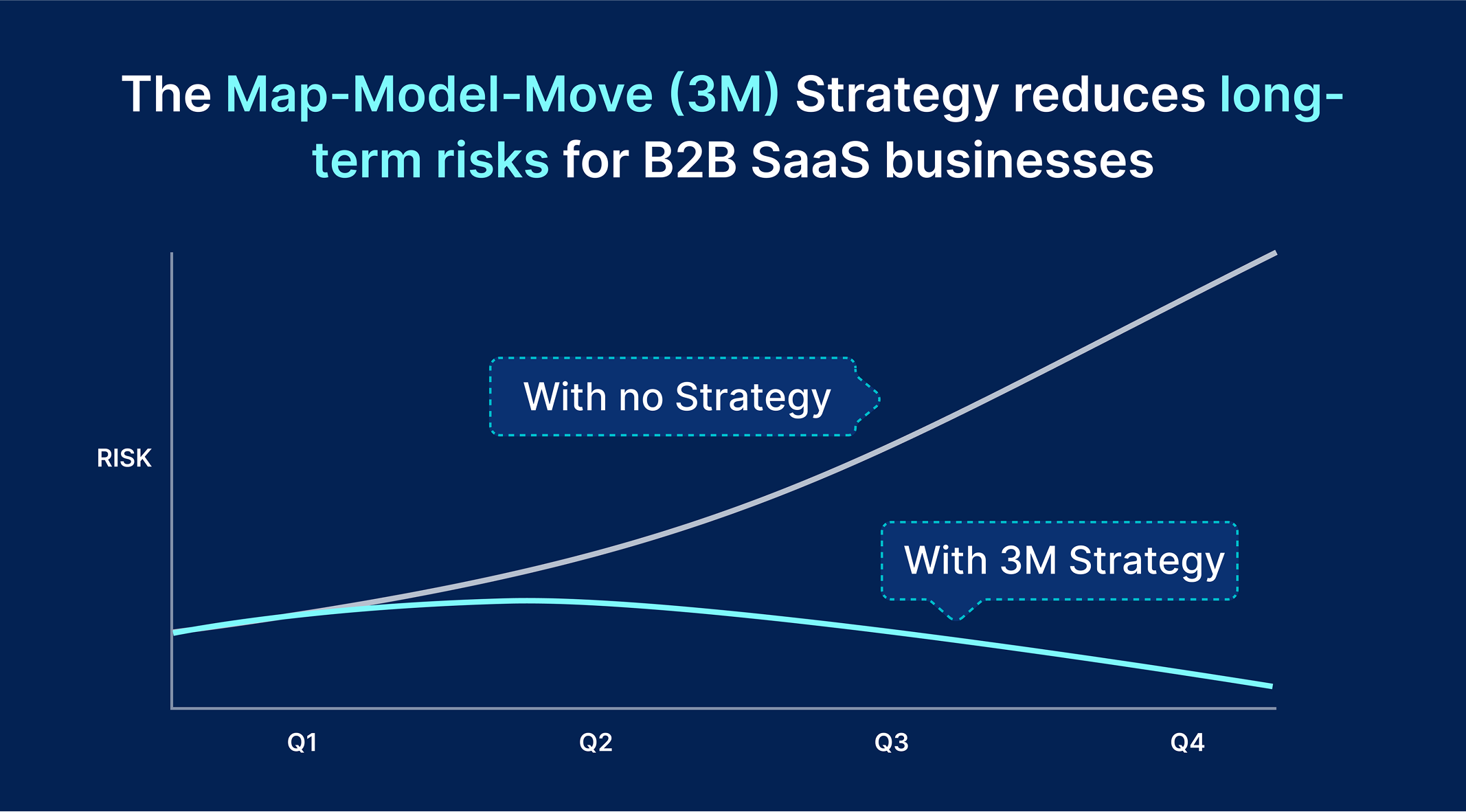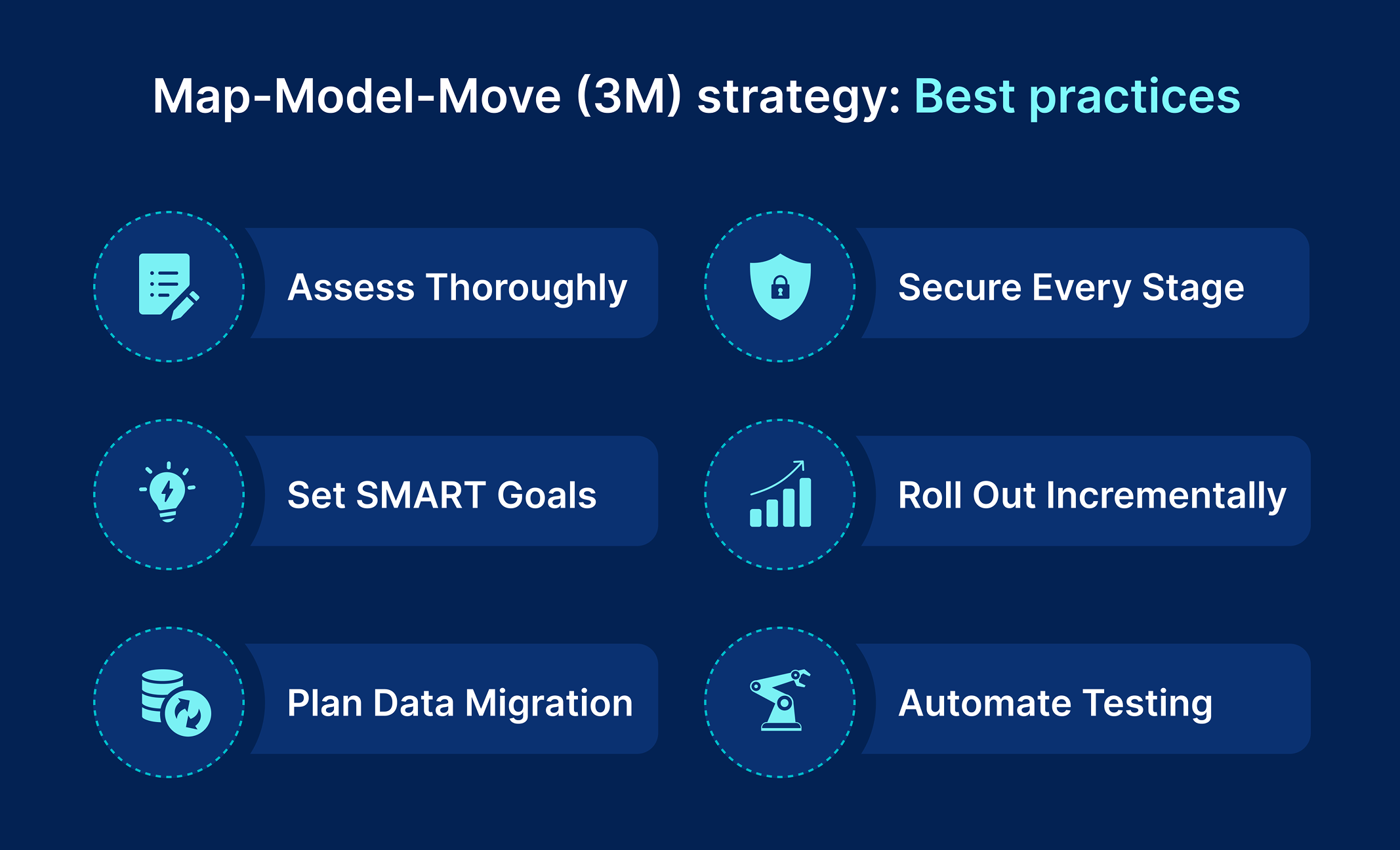Modernising a software product goes far beyond merely upgrading technology or redesigning UIs. It’s about executing a strategic transformation with well-defined goals and a clear roadmap. Yet, many B2B SaaS businesses rush into modernization without the necessary groundwork, leading to costly setbacks. In fact, McKinsey & Company reports that nearly 70% of digital transformation programs fail, often due to insufficient planning and resistance to change. Instead of progress, teams face delays, budget overruns, and unhappy customers.
At Amplifyn, we’ve witnessed how easily modernization initiatives veer off course without a solid foundation. This inspired us to develop the Product Modernisation Canvas, a simple yet powerful tool designed to help executives and software engineering managers understand their product’s current state, define success on their terms, and chart a risk-free path forward. This approach eliminates guesswork and delivers clarity from day one.
Costly mistakes small B2B SaaS businesses make
Upgrading a software product can feel urgent but that’s exactly where many businesses go wrong. In the rush to upgrade, teams often skip critical preparation. Some of the most common mistakes we see include:
- Jumping in without clear business goals or roadmap
- Underestimating the complexity of systems already in use
- Ignoring internal resistance and change management
- Failing to test thoroughly before rollout
- Overlooking long-term costs and skill gaps
These aren’t just minor setbacks, they can cause serious damage.
UI & tech overhaul gone awry
FreshBooks, a long‑standing cloud accounting tool for freelancers and small businesses, decided to rebuild its product from scratch in 2016. The goal was to simplify workflows and modernise the interface. But they underestimated the system already in use, shifting from PHP monolith to a modern JavaScript SPA took years, cost millions, and delayed feature delivery. The complete rewrite slowed momentum and alienated users who had grown accustomed to the old system. It consumed roughly $7 million before becoming viable. The effort was high-risk and nearly derailed the business.
A vision without clear business alignment
WooCart, a hosting platform for WooCommerce businesses, attempted a complete product rebuild to streamline their stack and deliver a smoother experience. However, despite investing nearly $1 million over three years, the project generated only around $300K in revenue, leading to an estimated $700K net loss before being shut down. The team underestimated the technical complexities of their existing system, overestimated their internal capacity, and lacked a solid plan to scale with the right skillsets. On top of that, they failed to conduct thorough market analysis and clearly define their niche, leaving them to compete with established platforms that were already “good enough” for most users. As a result, even with technical improvements, customer acquisition remained unusually tough.
These stories all point to one thing: modernisation that doesn’t align with expected outcomes as a business leads to costly mistakes.
Challenges B2B SaaS businesses face during product upgrades
Modernising established SaaS products is complex. Challenges range from tangled legacy codebases and scattered databases to internal resistance and budget constraints. Common hurdles include:
- Adapting to new system architecture
- Misaligned stakeholder expectations
- Risk of data loss during migration
- Potential service downtime
- Unexpected cost overruns
Without a comprehensive plan, these risks can derail your entire modernization initiative.
At Amplifyn, we help executives and software engineering managers mitigate these challenges using the Map-model-Move Strategy, a practical, zero-disruption approach. The Product Modernisation Canvas plays a pivotal role in this strategy by breaking down every aspect of your product, team, and processes to craft a tailored, risk-managed roadmap. This enables your teams to modernise confidently without downtime, delays, or wasted resources keeping executives, managers, engineers, and all internal teams aligned and motivated.
How the 3M model minimises risks and ensures success
Modernisation efforts often fall short not because of bad ideas, but because of poor execution. A Gartner study found that 83% of modernisation projects either fail or exceed their budgets and timelines. This clearly indicates how easy it is for modernisation projects to derail without the right planning and support. That’s why having the right expertise early on is key to achieve the expected business outcomes.
At Amplifyn, we guide businesses through the modernisation journey with the help of Product Modernisation Canvas, a critical component in the Map-Model-Move (3M) strategy. Instead of jumping straight into implementation, we help executives and software engineering managers map out their business objectives, understand their product’s current limitations, and align on customer expectations. This ensures everyone’s on the same page and helps you align with the expected business outcomes without the risk of unexpected setbacks.

What successful B2B SaaS businesses do differently
Upgrading a software product successfully without disrupting your everyday business requires more than just new software. It’s about following the right practices with focus and clarity. Here are six proven practices we follow in the Map-Model-Move (3M) strategy to help executives and software engineering managers transform confidently.
1. Conduct a comprehensive assessment first
Before jumping in, evaluating the current systems in place thoroughly is the key. Understand dependencies, architecture bottlenecks, customer complaints, and B2B SaaS business needs. According to McKinsey’s study, skipping this step is one of the key reasons why 70% of digital transformations fail. A clear understanding sets the stage for realistic scope and goals.
2. Set measurable and realistic goals
Modernisation should always serve a purpose. Whether it’s to expand into a new market, achieve required security compliance, improve performance, deliver a better user experience or staying competitive, having SMART goals keep teams aligned and success measurable. It’s also key to securing stakeholder buy-in and tracking ROI.
3. Invest in a strong data migration plan
Data loss or inconsistency can derail your modernisation entirely. A Harvard Business Review study shows that 47% of failed modernisation efforts cited poor data migration as one of the major issues. Plan ahead with a checklist:
- Validate data quality
- Prepare backups
- Automate where possible
- Monitor during the transition.
4. Embed security at every stage
According to BD Emerson, 43% of all cyberattacks target small-medium scale businesses, including B2B SaaS firms with fewer than 1,000 employees. Security should be prioritised at the top from day one. From access control and encrypted pipelines to regular vulnerability scans, ensuring security at each step protects your customer trust, and compliance posture.
5. Start small with incremental rollouts
A complete rewrite might feel tempting, but often leads to scope creep. Instead, focus on an incremental approach, improving one module or service at a time. This gives time to learn, adapt, and validate results while reducing risks and downtime.
6. Automate testing and monitoring
Automation improves reliability and speeds up deployment cycles. By integrating continuous testing and monitoring, you reduce manual errors and catch issues early. A study by Capgemini found that businesses that adopted automation saw a 45% improvement in release quality. It’s one of the most effective ways to ensure consistency post-modernisation.

Your path to risk-free modernisation journey
Modernising your product is no longer optional, it’s essential to staying competitive. But success lies not just in taking action, but in taking the right action. Throughout this blog, we explored the most common reasons why even organisations like Nike and the FBI with bigger budgets failed at modernising.
At Amplifyn, we’ve turned this chaos into a clear system. The Map-Model-Move (3M) strategy is built for risk-free transformation, helping executives and software engineering managers act with precision instead of assumptions. At the heart of this approach is the Product Modernisation Canvas, which maps out your goals, current product state, and business context, ensuring you start strong, and stay on course. Because the path to modernisation isn’t just about moving fast, it’s about moving forward with clarity and confidence. Ready to modernise without the guesswork? Let’s get in touch.








.png)



